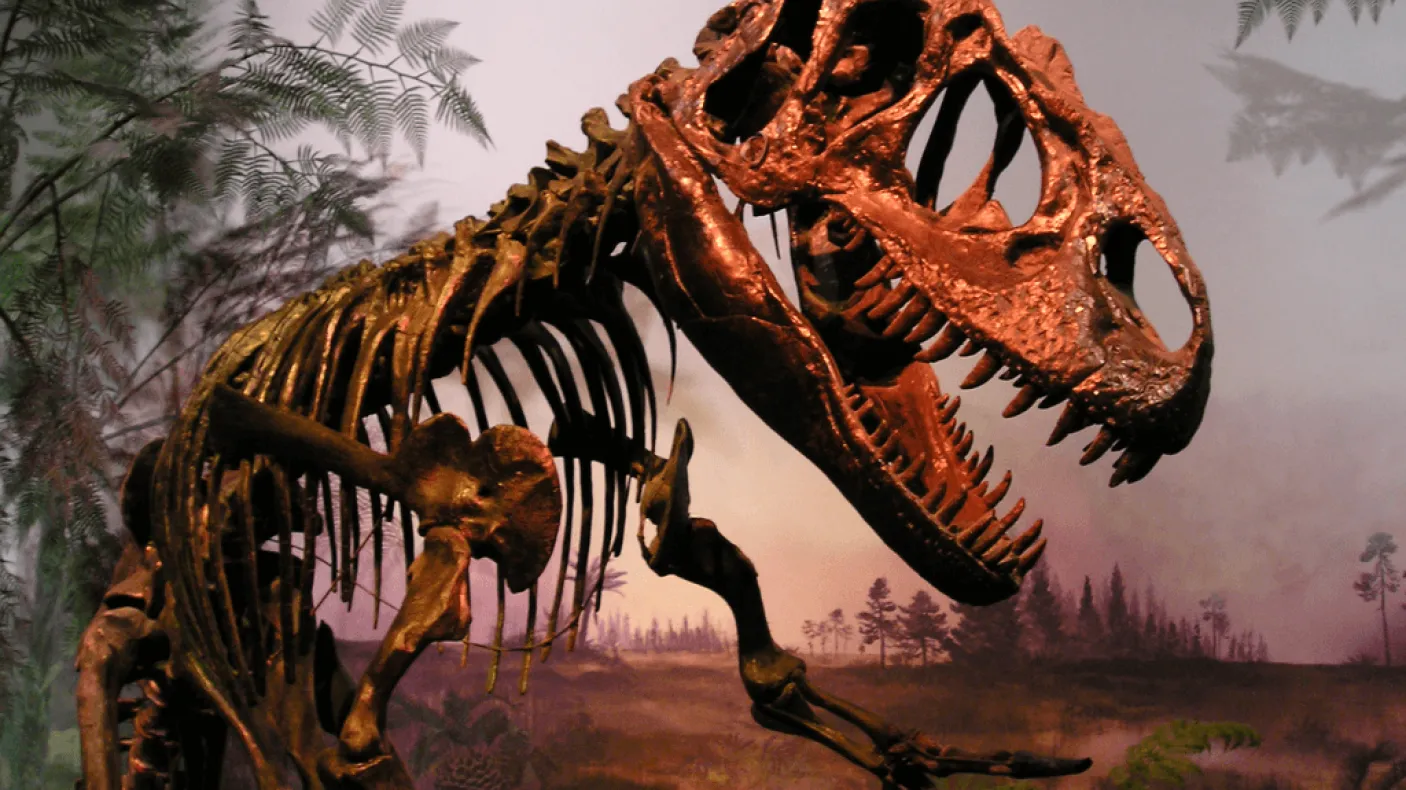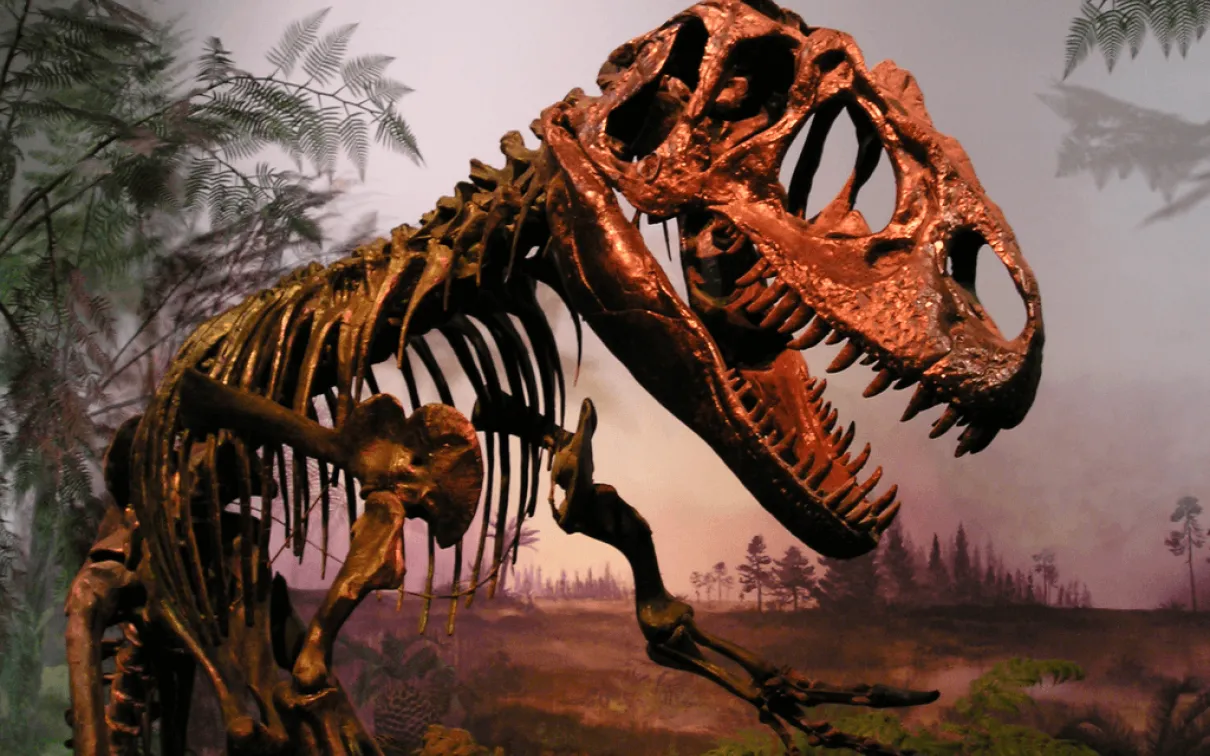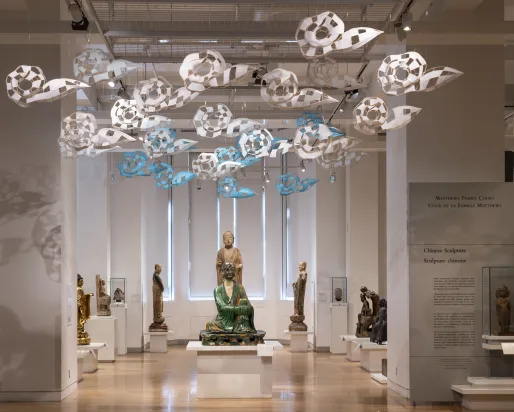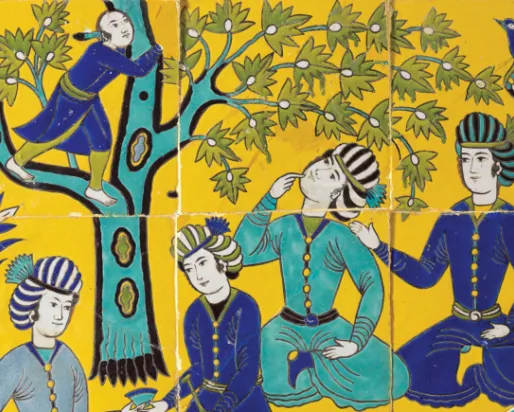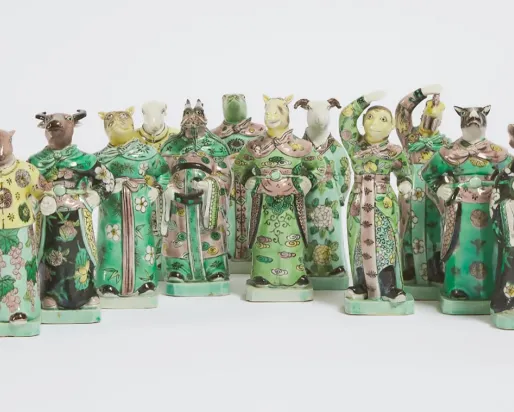The Ultimate Dinosaurs
Giants From Gondwana
Date
About
Millions of years ago, lands that were once united were torn apart.
Dinosaurs were carried in different directions, passengers on moving continents.
An incredible array of dinosaur diversity began to emerge in the southern hemisphere, in the ancient land of Gondwana.
The land masses that would form modern-day Africa, Madagascar and South America began to take shape, and were home to the largest and most unusual dinosaurs to have ever roamed the earth.
Now, for the first time in North America, audiences will meet a new breed of beast in the ROM's landmark exhibition Ultimate Dinosaurs: Giants from Gondwana.
An extraordinary opportunity to experience dinosaurs you've never seen before, in ways you've never imagined.
Highlights
Augmented Reality
Not only will you see new dinosaurs in the exhibition, you'll experience them in new ways through augmented reality (AR).
Three AR stations in the exhibition allow you to experience dinosaurs in surprising ways, including virtually fleshing out a dinosaur skeleton.
If you have an iPhone or iPad* mobile digital device, download our ROM Ultimate Dinosaurs app and bring it with you to the ROM, or use the iPads provided in the exhibition.
You can also experience AR on select advertising for the exhibition. Look for ROM transit shelter ads around the GTA and other materials that include AR instructions.
* Works best with iPhone 4, iPhone 4S, iPad 2 and iPad 3. Also compatible with iPhone 3GS.
iPhone and iPad are trademarks of Apple Inc., registered in the U.S. and other countries.
Interactive Experiences
In addition to augmented reality, the exhibition features a range of interactive experiences that both adults and children will love.
Reactive Walls
Using body-scanning technology, two giant digital walls show dinosaurs from the northern AND southern hemispheres that react to visitors' movements as they approach.
Multi-user Interactive Game
Visitors can digitally reassemble the continents into the single land mass of Gondwana through iPad stations. Win the game and reveal key information to understanding the effects of continental drift on dinosaur evolution.
Interactive Timeline
Visitors can explore evolutionary and geological stories by 'scrubbing' a virtual timeline at this iPad station.
* iPad is a is a trademark of Apple Inc., registered in the U.S. and other countries.
Family Trail
Travel around the world on our Family Adventure Trail. Collect your own first-edition copy of our ROM Comic book, Ultimate Dinosaurs!
Play with interactive exhibits. Touch real fossils. Journey through time and collect special dinosaur stamps for your ROM PaleoPassport.
Learn how fossils are made and understand why dinosaurs were so huge. Complete the Adventure and receive your very own Junior Paleontologist Certificate!
Fantastic fun for you and your little one.
The Ultimate Dinosaurs Team
David C. Evans
Curator, Vertebrate Palaeontology
B.Sc., Integrated Sciences Program, University of British Columbia, 2003
Ph.D., Ecology and Evolutionary Biology, University of Toronto, 2007
Dr. David Evans is Associate Curator of Vertebrate Palaeontology, and he oversees dinosaur research at the ROM. He is also a cross-appointed Assistant Professor in the Department of Ecology and Evolutionary Biology at the University of Toronto.
David first laid eyes on dinosaur skeletons in the galleries of the ROM and has been interested in palaeontology and evolution ever since.
David's work has led to publications on systematics and evolution of dinosaurs, functional morphology, and phylogenetic methods and theory.
His research program at the ROM focuses on the evolution, historical biogeography, and palaeobiology of plant-eating dinosaurs and their role in Late Cretaceous terrestrial ecosystems. His aim is to clarify the evolutionary relationships and diversity of hadrosaurid and pachycephalosaurid dinosaurs, and to evaluate patterns of dinosaur evolution and biogeography as they relate to environmental changes leading up to the end Cretaceous extinction event.
Because new fossil discoveries have the potential to drastically change our perception of the history of life, Dr. Evans is also active in the field, searching for and collecting dinosaurs and other vertebrate fossils. Current projects include fieldwork in southern Alberta, the Canadian Arctic, Mongolia, and South Africa.
David is also known for "rediscovering" the skeleton of a huge long-necked Barosaurus within the ROM's own collections, which is now the centrepiece of the Museum's James and Louise Temerty Gallery of the Age of Dinosaurs.
Visit Evans Lab online
Follow @davide_rom on twitter
Matthew Vavrek
Contract Curator, Palaeontology
PhD, Palaeontology, McGill University, 2011
BSc, Palaeontology, University of Alberta, 2004
Matthew's research interests revolve around large-scale ecological patterns in the fossil record and the processes that can create them. This involves projects on species diversity in dinosaurs, latitudinal diversity gradients in plants, and species turnover in small fossil vertebrates. Much of his research involves fossils from northern Canada, as the Arctic holds a record of some of the biggest changes in climate and biodiversity. Matthew's field work has taken him across the world, from Canada to Lebanon and Panama. He currently spends much of his time in the field in northern Canada, including the Yukon, Nunavut and the Northwest Territories, digging up the dinosaurs and ancient forests that once lived above the Arctic Circle.
ROM Research
The ROM is the largest field research museum in Canada, with more than 40 curators in disciplines from Anthropology to Invertebrate Zoology conducting groundbreaking studies in Toronto and around the world. Research projects such as those of David Evans and his lab form the core work of the Museum – this is the critical intellectual capital that makes ROM exhibitions, galleries, education and outreach both fascinating and cutting-edge.
David Evans' Dinosaur Research
Dr. David Evans, curator of Ultimate Dinosaurs, and his lab at the ROM have spent the majority of their time prospecting and excavating the great fossil fields of western North America, including the badlands of Alberta, Canada.
This environment documents the staggering diversity of Laurasian dinosaurs. By the Late Cretaceous period, the dinosaurs of Laurasia and Gondwana had been isolated from each other for over 50 million years.
Evolution acting on their respective plants and animals had produced very different worlds in the North and South. At this time, sea levels were much higher, and the central part of North America was inundated by an inland sea that stretched from Arctic Ocean to the Gulf of Mexico.
Although much of David's time in the field has been spent in southern Alberta, he has also travelled to several areas in the far north, where he has found evidence of dinosaurs that lived above the Arctic Circle.
